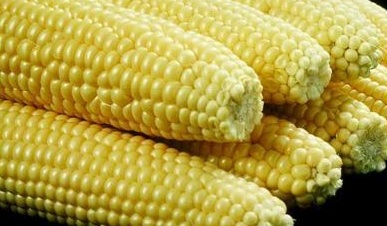
 January 14, 2010 — In what
January 14, 2010 — In what
amounted to a kind of census of sweet corn grown for processing, three years of
data from 175 fields in Illinois, Wisconsin, and Minnesota shed light on what
works and what doesn’t.
January 14, 2010 — In what
amounted to a kind of census of sweet corn grown for processing, three years of
data from 175 fields in Illinois, Wisconsin, and Minnesota shed light on what
works and what doesn’t.
Along with identifying the
most troublesome weeds, the results also revealed some of the more complicated
relationships among factors influencing both weed control and sweet corn yield
in the Midwest.
 |
|
“Rather than a typical
controlled field experiment, this was a large scale approach,” said University
of Illinois and USDA Agricultural Research Service ecologist Marty Williams.
“We wanted to find out what some of the driving characteristics are on the
regional level for sweet corn production.
“We contacted sweet corn
processors in the Midwest. They supplied us with fields to study as well as a
huge amount of information on the agronomic practices used in those fields,
such as planting dates, tillage practices, and herbicide use.”
From other sources,
Williams acquired environmental data for the fields, including temperature,
rainfall, and latitude. In all, the study analyzed 20 environmental variables,
30 agronomic variables, and 56 weed species.
Identifying which weeds
were most abundant was the easy part.
Just prior to harvest,
Williams and his team walked the 175 fields and noted the weeds present. “Most
of the fields had a number of species,” Williams said. “On average, there were
four to eight weed species in a field. Most the fields were dominated by a couple
of species, but it wasn’t the same dominant species from field to field.”
The most abundant weed
species they observed in the Midwest were fall panicum, giant foxtail,
wild-proso millet, common lambsquarters, and velvetleaf. Williams added that
each state had its own uniquely dominant weeds.
The next step, finding
characteristics of the best and worst fields, was much more complicated.
Williams was looking at not only sweet corn yield of the 175 fields, but also
weed diversity, weed interference, and the weed's ability to propagate within
the short window to crop harvest.
“We were able to identify
the highest yielding fields as those that used inter-row cultivation, a sweet
corn hybrid that matured in less than 84 days, and were in the northern part of
the production region,” said Williams. “One break in latitude came near 42
degrees north and that’s right about the border line between Illinois and
Wisconsin. Fields further north also had lower weed interference and produced
fewer weed seeds.”
For those fields that
didn’t do as well, weed interference was the best indicator of yield loss.
During the field visits, Williams and his team also predicted yield loss due to
weeds. “Ultimately, over half of the fields in the Midwest had a level of weed
interference sufficient to cause yield loss,” Williams said.
Planting the weediest
fields in June or July was one recommendation for more successful weed
management that surfaced from the study. When the fields are cleaner, earlier
planting is actually beneficial for crop growth.
Williams said that
information gained from the regional study was consistent with some of the
controlled research in experimental field studies they’ve done. “We’ve tested
various planting dates and the crop tolerates common cornbelt weeds better in a
June or July planting than it does in an April or May planting. Annual weeds
that emerge and then are taken out when the soil is turned over for planting,
you don’t have to worry about again.”
Another factor that played
a major role was water supply. “We have no control over rainfall, of course,
but we noticed that those conditions with poor water supply had bigger problems
with weeds. Soil-active herbicides aren’t nearly as effective when weed
seedlings are emerging in dry soil. Likewise, drought conditions reduce
effectiveness of post-emergence herbicides.”
One surprising observation
from the data was that fields receiving the highest herbicide rates and most
expense weed control programs had higher weed diversity, more weed
interference, and produced the most weed seeds. Williams believes this may be
the result of farmers applying more herbicides and at higher rates to the
weediest fields, but with limited success.
The research team used a
type of data analysis called Classification and Regression Trees (CART) to make
sense of the enormous amount of data in the study. CART is more commonly used
in social science experiments. The analysis looks for a single variable in the
huge dataset, which separates it into two distinct datasets, then four, then
eight, like the branches of a tree. The analysis can also “prune” the tree back
to something that’s most meaningful, thus identifying the few variables most
important to crop yield.
Although weeds are still a
big problem for farmers, Williams noted that when this recent data was compared
with weed surveys done some 50 years ago, “the overall weed density is an order
of magnitude lower. Also, a lot of the current weeds weren’t a major problem
years ago, but then there are some like lambsquarters that are still pretty
highly ranked. So there’s been a little shuffling of the players, which we
expect to continue.”
Print this page